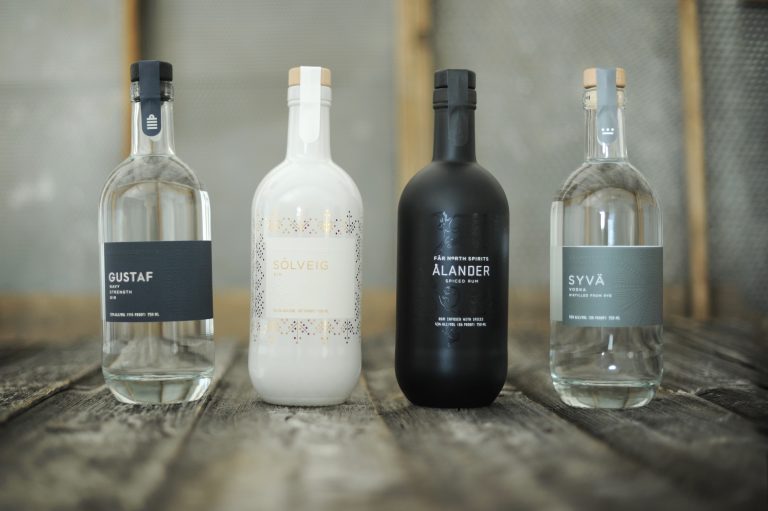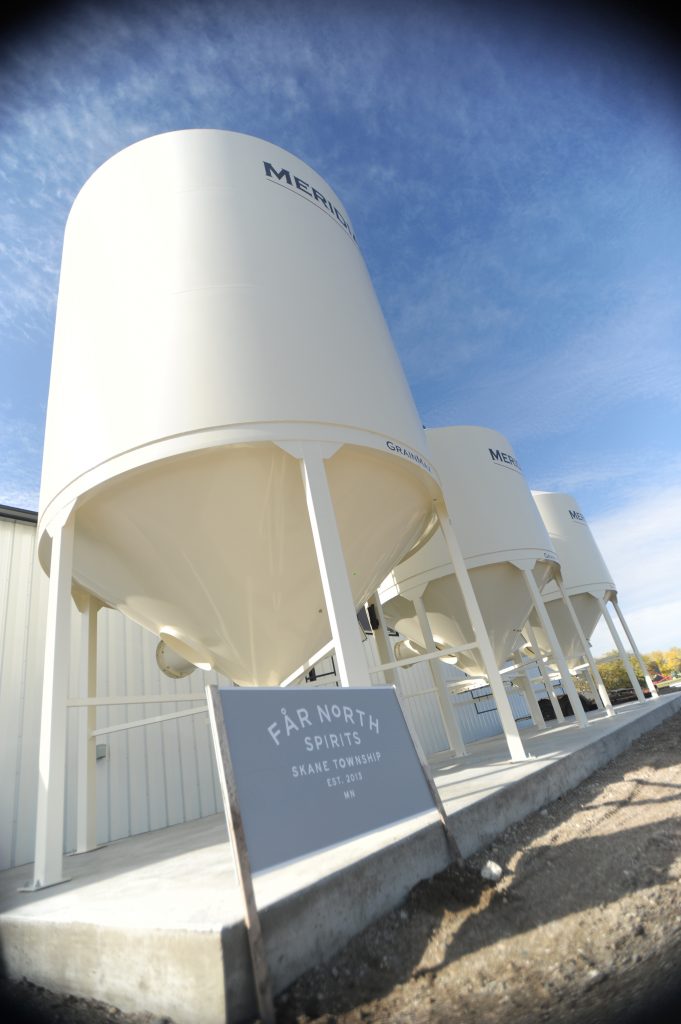Far North: Farm Fresh Viking Spirits
A query came up recently among booze nerds on social media to name the most remote whiskey distillery they know of in operation. Among some rather far-flung contenders in the Scottish isles and Tasmania, Far North, in Hallock, Minnesota was thrown in the ring. As the name suggests, they happen to be the northernmost distillery in the United States, and are also one of only a few in the U.S. that grows the grain for their own line of spirits. Independent? Craft? Handmade? Field to Glass? As more small brands join the herds, in this context, the meanings of these terms have basically turned to rubber. However, at Far North, they live up to the word.
It starts with a familiar story in craft distilling: married founders, Cheri Reese and Michael Swanson, abandoned the big, bad corporate world to do something more meaningful and enjoyable with their lives by making spirits and starting a distillery. Here’s the twist - they didn’t have to prospect for a place to distill, it was already right there - on their fourth-generation family farm. This way, they are a part of every process - truly from field to bottle - of making their vodka, gin (regular and navy strength) and rye. “We grow the [non-GMO] rye and corn used to make the whiskey right outside the distillery, literally, everything but the rum [Ålander Spiced Rum]. We bring in a premium demerara sugar for that,” says Swanson, who is the master distiller, referring to the sugar sourced from fellow farmers Lula-Westfield in Louisiana. “It gives us a lot more control over that end of the process.” As a nod to the couple’s Scandinavian heritage, the spirits have names like Solveig (the gin representing the female name that means “sun” and “strength”), Gustaf (the navy strength gin named for the adventurous, viking-esque great grandfather who founded the farm), Syvä vodka (Finnish for “deep”), etc.
Did we say “control”?
What happens if all that work is done, and in this case, it’s more work than most, and something goes wrong in the maturation process? Swanson points out, “Farming keeps you humble. You think you’re in control, but you’re in control of very little. There’s a lot of similarities in barrel aging. There’s a whole lot you’re not in control of, including the coopering techniques that were being done that day and how many barrels were made. You trust your cooper with an awful lot, I think.”
Even Far North’s barrel sourcing is kept local. “All my barrels come from Minnesota - we have three cooperages. I talk with them about these things. When I put my whiskey in your barrel there’s a lot in your hands. I can manage the distillate, the proof that goes in, but once that starts extracting and reacting, it’s up to the elements.”
Røkner Rye is also given a quick finish in ex-Cognac barrels, which imparts a distinctly grapey finish to the chewy, rich spirit. Each batch is slightly different than the next with batches 8 and 9 already in the marketplace. Remarks Swanson, “Our batches are getting incrementally older as we move along. We’ve been laying down larger barrel format sizes as well.”
Deep Cuts
One can source botanicals from the most exotic locals in the world to make gin. However, no amount of Madagascar-sourced vanilla is going to make a hastily made spirit base with too much of the rough alcohol from heads and tails left in the final cut into a good gin. Says Swanson, “We’re pretty cautious with our cuts. It’s not what you call efficient, but I don’t want to put something out there that isn’t up to snuff.”
It's All About the Rye
Tasting the non-rum parts of the lineup, all made from the same rye, there is a distinct freshness to them. For something that is supposed to be odorless and colorless, Syvä is one of the most complex vodkas I’ve tasted, which is in a large part due to the AC Hazlet variety of rye Swanson grows to make it. “About a year and a half in, I had a farmer in Maine who grows rye for some New England distillers contact me looking for the specific variety of rye that we grow. We chose it because of its winter hardiness, resistance to lodging and different agronomic reasons, but a seed dealer can’t tell you what it tastes like - rye is rye and that’s it. The variety he was getting from the grain merchants was really peppery, it didn’t have the vanilla notes. They wanted this particular variety because of its fat vanilla note. I’d been distilling it for about a year and a half at that point, but I hadn’t distilled anything else, so I couldn’t compare it to anything.”
Swanson, who has a scientific background, embarked on a new project that combines both of his passions. “It got me thinking, maybe there is a difference. So I talked to this small grain specialist at the University of Minnesota who just starting his rye trials to assess varieties with different agronomic characteristics. I wrote up this grant proposal for the Minnesota Department of Agriculture to study the different varieties of rye to look at their agronomic characteristics, their malting analyses and, something I couldn’t find any research on, their sensory characteristics.”
This became an elaborate rye study conducted right on the farm. Five different varieties of rye are being grown for comparison, and each test plot is processed identically in terms of milling, malting and fermentation. They are distilled into white whiskey using the same yeast strains. The trial is still ongoing, and there is talk of growing the rye in different plots to also test effects of terroir.
The ultimate goal is to publish a white paper to not only prove a point about the differences in rye varieties, but also to make more thorough grain product information available overall, Says, Swanson, “...we want to put it in front of farmers so they can decide what kind of varieties they want to grow based on where they want to market this. Ultimately, I’d like to get distillers and farmers talking to each other. There are grain merchants very much profiting from that lack of information. The distillers know the farmers, but they don’t know enough about the varieties to tell them what they want. The typical product that people get from grain merchants is called ‘Variety Not Stated’ - a mix of whatever is grown in that area.”
Now that Swanson has distilled more than one variety of rye, is he happy with his choice for Far North spirits? “The more varieties I taste, the luckier I feel that we chose this particular variety because it really is fantastic. Those flavor notes in the vodka, I have to approach that with a little humility, I don’t think that’s anything I did. It came with the grain. When I was first distilling it there was this vanilla note that I thought was a problem - it was supposed to be neutral - though of course you’re not going to get neutrality off a pot still... It’s a varietal characteristic, we just bring it out.”
To find Far North spirits, click here.






